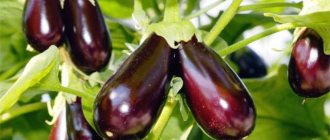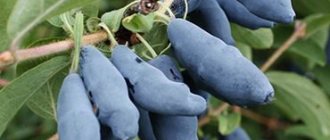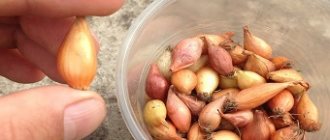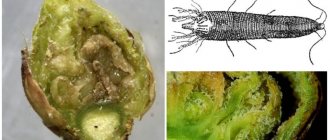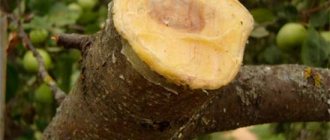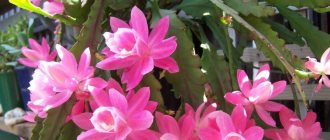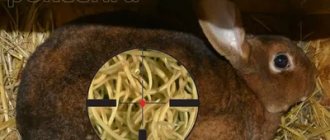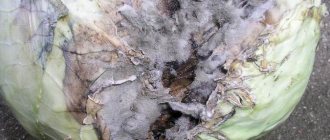Hydrangea is an amazing flowering plant that can decorate a room, terrace, balcony, flower garden or garden.
Lush bushes with bright green foliage are strewn with caps of flowers in a variety of delicate shades: white, pink, red, lilac, blue. I would always like to see such a plant healthy and blooming, but some problems may arise during the growing process.
Hydrangea is quite resistant to diseases and pests , but still requires constant care and attention. The vagaries of nature and improper care can provoke the appearance of various diseases. In this case, it is important to identify the problem in time and know how to solve it correctly and quickly.
In the article you will see everything about diseases and pests of hydrangea and treatment of the plant, as well as photos of problems.
External stimuli
In addition to pest infestation and obvious diseases, there are external factors that negatively affect the beauty and health of hydrangea. For example, yellowing of leaves can be caused by the following irritants:
- Bright scorching sun. The plant prefers to be in partial shade, so too much light can be harmful.
- Overmoistening of the soil. Although hydrangea loves moisture, excessive accumulation of water can cause yellowing of the foliage.
- Lack of fertilizers. For growth and lush flowering, hydrangea needs regular feeding.
- Reduced soil acidity. The flower needs acidic soil (pH 3-6). Even the color of flowers depends on the level of acidity: the more acidic the soil, the more purple and blue colors appear; closer to neutral, white and pink shades predominate. To increase acidity, periodically during watering you should add 2-4 drops of lemon juice to 1 liter of water.
Sometimes hydrangea foliage begins to dry out and fall off. The reason also lies in external stimuli:
- Insufficient watering, especially in hot weather.
- Low environmental humidity. This often happens in enclosed spaces and greenhouses. Regular ventilation and humidification of the air is important.
- Lack of nutrients. Hydrangea feeding is carried out once every 7-10 days. This is especially important during bud formation and flowering.
Sometimes a gardener may encounter blackening of hydrangea leaves.
It can be dry or wet and is also caused by external factors. Dry blackening is manifested by the formation of brown spots on the edges of leaves, which subsequently lead to wilting of the foliage. The reason may be:
- Hard water. Before watering, it is recommended to let the water sit for at least 24 hours;
- Sunburn. It is important to protect the plant from direct sunlight.
Wet blackening is determined by limp, darkened leaves. It may appear due to:
- Sudden temperature changes, drafts;
- Excessive watering;
- Heavy soil that retains moisture and impedes breathing.
Why do hydrangea leaves turn yellow and wither?
Drying, wilting, and yellowing of hydrangea leaves is a common phenomenon, especially in a home plant.
Why do hydrangea leaves turn yellow and the edges dry out - causes and treatment
Sometimes it is difficult for gardeners to determine why hydrangea leaves turn yellow. But the green part, like an indicator, reacts to the slightest changes in air temperature, watering regime, and soil composition. Insect pests also cause the death of leaves on bushes.
Incorrect conditions of detention
The gardener's oversights in caring for plants, as well as indoor flowers, lead to the fact that the foliage may first turn yellow and then dry out completely.
Changes in external growing conditions can also cause foliage to wilt:
- sudden changes in air temperature;
- indoor humidity (for indoor flowers);
- lack or excess of nutrients;
- insufficiently careful flower transplantation;
- overwatering of the plant.
Flowers need a lot of sunlight, but not under the scorching sun. The leaves will get burned from it. The light should be uniform and soft. Changing the growing location will solve the problem. If the hydrangea is in a pot at home, then rearrange it.
Attention! Hydrangea planted in a shaded area, or, conversely, under direct exposure to sunlight, does not feel well - the foliage darkens, turns yellow, and withers.
Excess moisture
Hydrangea often loses its foliage due to the soil being too wet.
- From excessive waterlogging, the roots first suffer: they rot, then die.
- Later - stems and leaves, since there is no nutrition from the roots.
- When the plant is uncomfortable, buds do not form, the gardener will not experience lush flowering.
In order to somehow revive the hydrangea, it is carefully replanted, since the young roots are vulnerable. Part of the old earthen clod is left. Watering is reduced and the greenery of the plant is sprayed more often.
Frequent drafts
Home hydrangeas are harmed by too high humidity in the room. The room is ventilated more often. At the same time, drafts are not allowed to form, since hydrangea is heat-loving.
It is necessary to carefully select a place of residence for plants.
Lack of minerals
Lack of fertilizer in the soil is one of the reasons for foliage wilting. During the growth period, starting in June, the bushes are fed at least 3 times (with organic matter and minerals).
To prevent hydrangea from turning yellow, in early spring it is fed with nitrogen, for example, Kemira flower, and then with potassium, phosphorus, and iron.
At the end of autumn, potassium-phosphorus fertilizing will not be superfluous for the growth of young shoots and the formation of new flower stalks.
Abundant flowering
The supply of nutrition in the soil is depleted; it is not enough for the growth and development of the plant. Due to lack of nutrition, the leaves wither, turn yellow, and fall off.
During vigorous flowering, paniculata hydrangea consumes a lot of nutrients
Hydrangea is a deciduous bush, the falling of leaves over time is a natural phenomenon. But due to lack of nutrition, the leaves fall prematurely.
Note! Feeding with minerals (phosphorus, potassium) immediately after flowering will help to avoid untimely leaf fall of hydrangeas.
Hydrangea chlorosis
Chlorosis occurs due to a lack of iron in the soil or as a result of metabolic disorders in the plant itself, due to which it cannot absorb iron.
The main sign of chlorosis is lightening and yellowing of foliage . At the same time, the veins on the leaves remain dark.
In addition, there may be a decrease in the size of the leaves, deformation of the buds, curling of the leaf plates, and drying of the shoots.
When a disease is detected, it is important to feed the plant with preparations containing iron in chelated form, for example, Antichlorosis and Ferovit.
You can also prepare the medicinal composition yourself. To do this, dissolve 2 grams of iron sulfate and 4 grams of citric acid in a liter of water. This solution should be sprayed on hydrangea leaves, and in case of advanced forms of the disease, watered at the root.
Another way to treat hydrangea chlorosis is to use a solution of potassium nitrate and ferrous sulfate . To do this, 40 grams of potassium nitrate are diluted in a bucket of water. Hydrangea is watered with this solution 2-3 times. After 3 days, watering should be done with iron sulfate in the same concentration.
Preventative agents for protecting hydrangea
Since diseases develop under certain weather conditions, when grown in the unstable climate of the Moscow region, the risk of infection with them is quite high. Therefore, preventive plant protection measures are extremely necessary:
- in autumn and early spring the bushes are treated with Bordeaux mixture;
- planting material must be treated with copper sulfate;
- Before planting, insecticidal preparations are applied to the soil;
- the area must be regularly cleaned and plant debris destroyed.
Timely prevention will help protect hydrangea from diseases and pests.
Compliance with the rules of agricultural technology is the key to the health of the entire garden. Moderate watering, proper soil selection, and regular fertilizing are mandatory measures when growing hydrangea.
Ring spot
The most common viral disease of hydrangea is ring spot. At the beginning, it appears in the form of vague spots in the shape of rings, about 2 cm in diameter.
Because of them, the leaves of the plant become deformed, wrinkled and die over time. The disease affects the ability to set buds: either the hydrangea loses it altogether, or the flowers turn out weak and small.
Unfortunately, there is no cure for ring spot yet.
When planting, it is important to choose healthy seedlings , since this disease is transmitted through seedlings. And when propagating by cuttings, it is important to make sure that the mother plant is completely healthy.
Dry and wet blackening
If brown spots have formed on the hydrangea, this indicates dry blackening. Markings appear along the edges of the leaf blade and lead to its wilting.
Among the reasons are:
- Excessive water hardness. Using tap water requires allowing it to sit for a day before watering.
- Getting a sunburn. The pot should be moved to a more shaded place.
If the foliage on the plant is limp and darkened, then this is wet darkening. The reasons for its appearance are as follows:
- sudden change in temperature;
- the appearance of drafts;
- excessive soil moisture;
- soil is too dense - loosening is required to improve access of moisture and oxygen to the roots.
Hydrangea pests
Leaf aphid . The main harm that the hydrangea aphid causes is that it sucks the cell sap from the plant and leaves behind a sugary secretion, which, in turn, serves as a food source for the dangerous sooty fungus. Aphids reproduce very quickly.
Thus, under each leaf, entire colonies of this pest can form, which, parasitizing, squeeze all the juices out of the plant.
As a result, the flower grows very slowly, and if the damage is severe, the leaves become deformed and turn yellow, and the upper part of the hydrangea may die.
Aphids are very delicate, they are loosely attached to the plant, so if there are not very many pests, you can get rid of them by watering the hydrangea with a powerful stream of water, while being careful not to damage the flower. Treatment with a soap solution is also effective.
In advanced cases, when aphids have formed entire colonies, it is necessary to use insecticides, for example, Fitoverma, Aktary, Iskra, Zubra or Akarina. Ladybugs eat aphids.
Spider mite . It settles on the back of leaves. It can be identified by small yellow spots that merge over time into a marble pattern.
At high temperatures and low humidity, it entangles the entire plant in 5-7 days.
In this case, small cobwebs and the pests themselves will be visible. As a result, the leaves dry out and fall off.
At the initial stage, you can get rid of spider mites by treating the hydrangea with a soap solution. If there are a lot of pests, it is necessary to use insecticides such as Tiofos, Akarin, Molniya, Fitoverm.
Slug . Slugs often appear where hydrangea plantings are too dense and dense. The harm they cause is by eating the foliage of the plant.
You can get rid of this pest using a granular preparation - Molluscicide. It spreads across the surface of the earth where slugs have been spotted.
Insects that carry diseases of large-leaved hydrangea, photo
Diseases of large-leaved hydrangea, like other species, are often transferred to healthy plants by pests. Among these insects:
- root-knot nematodes;
- spider mites;
- aphid.
Garden hydrangea, diseases and pests - photo of spider mite
It is recommended to use insecticides against pests: Akarin, Komandor, Tanrek.
Prevention of diseases and pests
Prevention is the best treatment. If the hydrangea is healthy, it is unlikely to get sick, and if this does happen, it will withstand the disease. If the plant is weakened, then viruses, fungi or pests can seriously damage it.
What will prevent diseases and pests and help grow a strong, healthy and beautiful flower:
- Correct location. In the scorching sun, leaves and flowers begin to quickly fade. Therefore, it is optimal for hydrangea to grow in partial shade;
- Sufficient watering. The plant loves moisture, so the soil should not be allowed to dry out. On hot summer days, it is necessary to water the bush every other day;
- Choosing the right soil - hydrangea will not survive in heavy alkaline soils. It needs acidic, light soil that allows air and moisture to pass through well;
- Proper fertilizing: at the end of spring, the emphasis should be on nitrogenous fertilizers, in the summer - on phosphorus-potassium fertilizers, and in the fall - mainly phosphorus;
- Preventive treatment of hydrangea wood. In the spring, before the start of the growing season, it is recommended to treat the hydrangea bush with copper sulfate at the rate of 100 grams per bucket of water. Another option is to use more modern drugs for preventive treatment - Topaz, Iskra, Fitosporin.
With proper care and constant care, hydrangea will grow lush and beautiful. It will become a bright decoration of your home or garden!
Now you know everything about diseases of leaves and flowers of indoor and garden hydrangea and their treatment, and you have also seen photos.
Fungal and viral diseases of garden hydrangea, photos of symptoms
Hydrangea is not often affected by fungal diseases. Fungal spores persist in the soil for a long time, but under favorable weather conditions they can cause serious harm.
Gray rot of hydrangea (lat. Botrytis cinerea)
Damaged tissues become soft and watery. In hot weather, they dry out, and depressions eaten away by the fungus form on the plants. The main factor in the development of the disease is rainy weather: the fungus spreads quickly and affects the entire bush.
Fungal diseases of garden hydrangea - photo of gray rot
Infected parts of the plant must be removed and burned, and the bush must be sprayed with Fundazol.
Downy mildew of hydrangea (lat. Peronosporaceae)
Humid air and temperatures of 18-20 degrees Celsius contribute to the development of the disease. Oily spots form on the foliage, which darken over time. The bushes should be treated with the following solution: 150 gr. dissolve soap in 10 liters of water, add 15 g. copper sulfate.
Hydrangea downy mildew - downy mildew
Hydrangea powdery mildew (lat. Erysiphales)
First, yellow and green spots are visible on the leaves, then a gray coating forms on the lower surface. Affected shoots become deformed and die. The plant gradually fades. For treatment, fungicides should be used: Fitosporin-B, Topaz, Skor.
Diseases of garden hydrangea - photo of powdery mildew
Septoria hydrangea (lat. Septoria)
Septoria blight is expressed as brown spots on the leaves (lighter in the center and darker at the edges). Completely affected leaves and shoots die. The bush should be treated with copper sulfate.
Septoria - a fungal disease of hydrangea
Viral ringspot of hydrangea (lat. Mycosphaerella brassicicola)
In addition to fungal diseases that can affect hydrangea, diseases of viral origin also require detailed study.
Viral diseases of tree hydrangea, photo of ring spot
Ring spot spots are necrotic in nature. The leaves wrinkle and the plant certainly dies. There is no drug treatment for the disease. Affected bushes must be removed and burned. The cause of the virus outbreak may be:
- poor quality planting material;
- insects that carry fungi and viruses;
- untreated garden tools.
Various pests discoloring leaf blades
Why do hydrangea leaves dry around the edges - what to do and how to revive the flowers
When a plant is damaged by a spider mite, the leaves turn yellow and dry out completely. An untimely response may result in the death of the flower. You can cure a damaged plant using pesticides.
Aphids on hydrangea
If the leaves turn black, then most likely, upon inspection, you can detect harmful aphids. The insect covers the plant with sticky sap, which becomes the basis for the immediate development of a fungal disease. Pollinating a flower with tobacco dust will be a great help and will save the plant in a short time.
Disease Prevention
Pests and diseases of thuja
Prevention is always safer and more effective than treatment. Here are the main preventive measures:
- Correct acidity and mineral composition of the soil. You need to water with soft water; when applying nitrogenous fertilizers, be careful not to overdo it, otherwise the hydrangea leaves turn black and dry out.
- Sun and humidity. Hydrangea loves diffused light and grows normally in the shade. Direct rays of the sun in summer can cause burns, and dry soil increases the risk of powdery mildew and peronosporosis.
- Planting material must be selected carefully so as not to introduce dangerous viral diseases.
- To protect plants from fungi and viruses, you need to disinfect the tools you used to work with diseased plants and burn the affected parts of the plants. Mulching the soil provides good protection against infectious branches and drying out of the soil.
- Prevention of fungi. Before the active growth of shoots begins, in the spring, you need to treat hydrangeas with fungicides.
Mulching the soil
